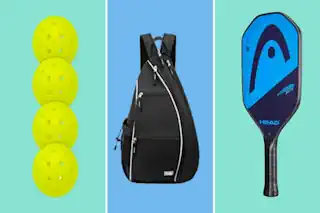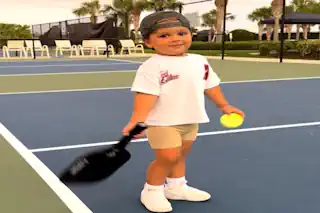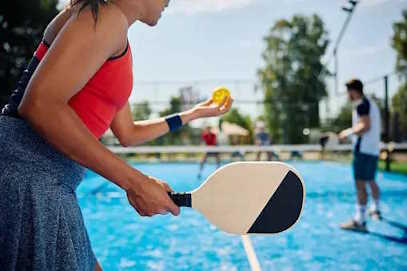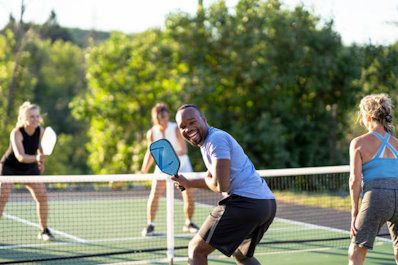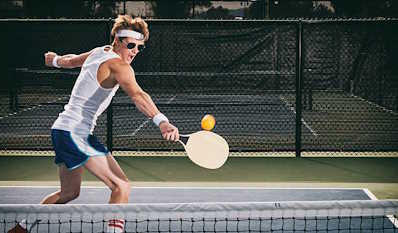Pickleball Drills: Mastering the “Circle The Wagons” Strategy
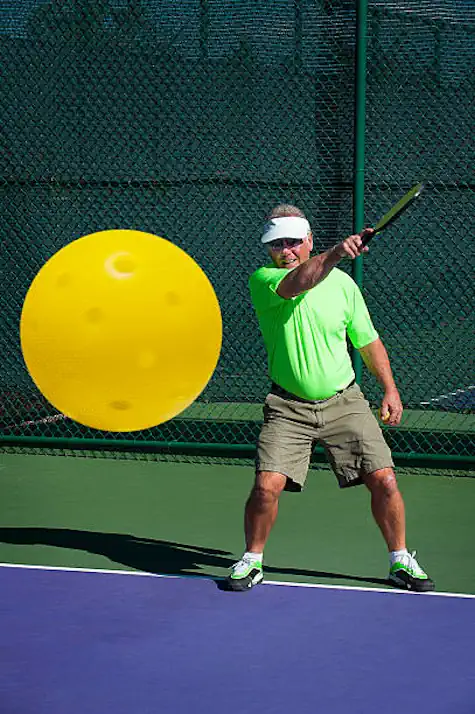
Pickleball, with its rapid rise in popularity, has transformed from a backyard pastime into a fast-paced, competitive sport. Central to its appeal is the blend of strategy, skill, and social interaction inherent in the game. Whether you’re a seasoned player or a beginner looking to up your game, structured drills provide a critical path to improvement.
One such drill, known as “Circle The Wagons,” emphasizes controlled play and quick movement all around the court. Circle the Wagons is one of the more advanced pickleball drills you should try. This guide will walk you through the setup, execution, and enhancement of this valuable drill. If you play pickleball this drill forces you to practice hitting the ball while running at top speed.
Let’s Start with the Basic Rules of Pickleball
The Rules Reminder
Before we get into the swing of things, it’s important to know the fundamental rules of pickleball play. Players use solid paddles made of wood or composite materials to hit a perforated polymer ball, similar to a Wiffle Ball, over a net. The net is lower than in tennis but not as low as in badminton. The game can be played either with two players (singles) or four players (doubles).
Here’s a quick rundown of the basic pickleball rules to get you started. Think of it as your quick-start guide to fun:
Serve it right: Serve must be underhand with the paddle below the waist, and the ball must be hit in the air without bouncing. The serve is made diagonally across the court to the opponent’s opposite corner or opposite side of the court.
Service errors: Errors during service, such as serving out of turn, serving the ball into the net, or serving the ball out of bounds, lead to faults. Keeping a keen eye on your serve’s direction and height can help avoid these mistakes.
Double-bounce rule: After the ball is served, the receiving team must let it bounce once before returning, and then the serving team must also let the returned ball bounce once before playing it. After these two bounces, players may either volley the ball in the air or play it off a bounce.
No-volley zone: The court has a 7-foot zone on either side of the net, known as the “kitchen,” where players cannot volley the ball. Players must observe this rule to avoid faults. Observe the kitchen line and non volley zone line at all times.
Scoring: Points can only be scored by the serving team when the opponent fails to return the ball or commits a fault. The game is played to 11 points, and a team must win by at least 2 points.
Switching sides: Each team switches sides after the first game. In a tiebreaker (the third game of a match), teams switch sides when one team reaches 6 points.
Stepping into the kitchen on a volley: One of the most common faults in pickleball occurs when a player steps into the no-volley zone, or the kitchen, to hit a volley shot. Remember, you can step into the kitchen to hit the ball if it bounces first, but volleying from within this zone is a definite no-go.
Hitting the ball out of bounds: Just like in tennis or badminton, if the ball lands outside the designated play area, it’s considered out, and the point goes to the other team. Judging the ball’s trajectory and controlling your shot power are key skills to keep the ball in play.
Remember, pickleball is as much about having fun and making friends as it is about following these rules. Forget the learning curve. Grab your paddle, and let’s hit the court with smiles and sportsmanship!
Understanding the “Circle The Wagons” Drill
The “Circle The Wagons” drill is all about controlling your shot while moving quickly as you run around the net changing sides of the court. The premise is simple yet effective: by circling the net, you and your partner will practice moving and hitting as a cohesive unit, honing your placement and accuracy skills under pressure.
This drill is ideal for players at all levels. Beginners learn the importance of court positioning, body position, and teamwork, while more advanced players focus on precision and the agility needed for competitive play.
Preparing for the Drill
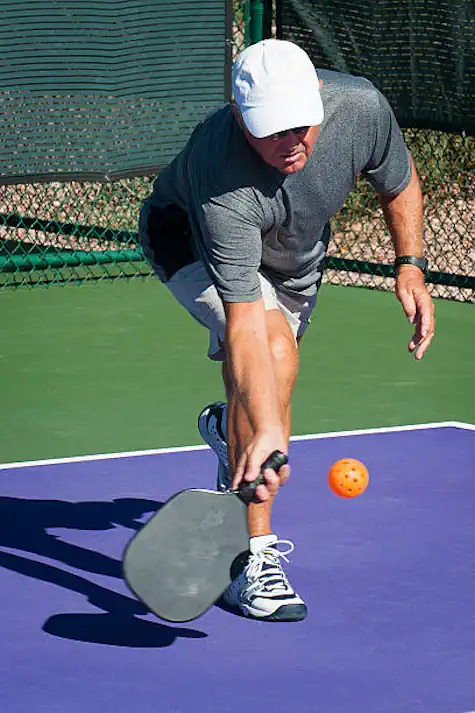
To begin, gather a partner and head to a standard pickleball court with a sufficient number of balls. Comfortable athletic wear and non-marking sports shoes are recommended. You must both be on the same page regarding your goals for the drill – whether that’s improving your serve and volley game, stamina, lobs, dinks or specific pickleball shots.
One position on the court needs to be designated as the serving spot. A decision also needs to be made before play starts on which direction players will run. Clockwise to work on backhand shots and counter clockwise to work on forehand shots. Don’t forget to bring lots of water for this drill. This drill can be run as singles but is a lot more fun when done with teams. Each player earns an individual score even though this is a team play drill.
Circle the Wagons Team Play
Players start with a standard serve. The ball hit below the waist and cross-court. A drop serve is sometimes a great choice to get started as drop serves tend to get the opponent moving towards the net.
Next is the double bounce rule. The receiving team must let the ball bounce before hitting it back and the serving team must let the ball bounce before hitting it back
Now we start Circle the Wagons
As soon as one player from the serving team returns the second hit to complete the double bounce rule, they run to the opponent’s side of the court. The other player stays until they make a hit.
The player on the opponent’s team who returns the second hit, or is making the third shot or third shot drive, must run to the other side of the court after they hit the ball.
From this point forward every time a ball is hit the player hitting the ball must run to the other side of the pickleball court.
Hence, we are running around the net as we take turns hitting the ball. We run as individuals not teams so team members change with every hit. Being on the same side or the same spot is not a part of this drill.
Play continues until a ball is hit out of play or into the net. The player who served the ball gets a point and the player in the server’s spot serves next. The next serving player stands in the designated serving corner and play continues.
Play continues to a score of 11 or a lesser score if agreed to by all players.
The same rules apply for just two players except you have to run a lot faster.
Performing the Drill
The drill involves running around the court in circles as you try to return the ball. Each time you hit the ball, move in the agreed direction and continue to circle the court each time you hit the ball, effectively “circling the wagons.” The goal is to maintain good ball positioning while gradually increasing the speed and intensity of your play. You must also think about ball placement since you are potentially hitting to three players or hitting to a running player.
Most players worry about reaction time but standing close to the net is not always a good position to play from. The best pickleball skills include advancing and retreating as play dictates. These pickleball drills force players to hit the ball from different angles than they normally would especially as their skill level improves. As the game continues your most important shot may be your next shot and only shot you get so it has to count.
These sound like simple pickleball drills but improvement in body position, court position, hand-eye coordination, and muscle memory are all vital during game play. When you know these things happen automatically you can focus on other issues during the pickleball game. Being in the correct position, knowing how much power to use, having proper technique, and practice hitting to specific locations are all easier when standing still but rarely are you standing still during a pickleball game. All of these are important to play pickleball at any level but especially if you have a desire to pursue more series tournament play.
Footwork and Strategy
This is a very cardio-intensive drill so be sure to warm up legs, ankles, knees, etc before you get started. Run as fast as you can when circling to give yourself as much time as possible to get to the ball and plan the placement of your return shot.
Anticipate your opponent’s moves and position yourself to cover as much of the court as possible without overlapping your partner.
Focus on neutralizing your opponent’s attacks with solid, controlled shots.
This drill can be done for a dinking game but you really have to be running to get around the net for the next shot.
Forehand Shots and Backhand Shots
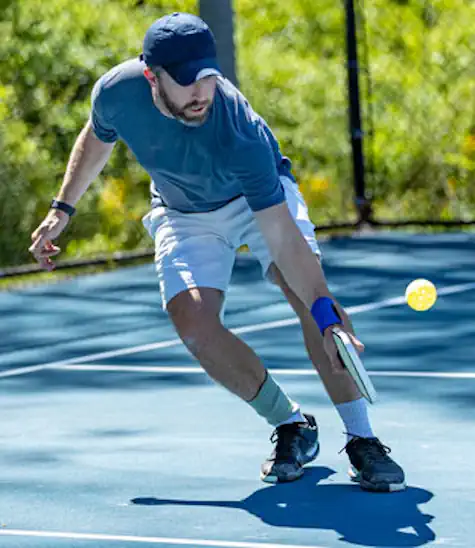
Work on executing varied shots, including dinks, lobs, drives, or your drop shot while you circle the court.
Aim to hit both the sidelines and the baseline to simulate game conditions and challenge your opponent’s pickleball skills.
Concentrate on placing your shots where your opponents can’t easily return them, but avoid the middle of the court, where they may strike with maximum efficiency.
Enhancing the Drill
To take your “Circle The Wagons” drill to the next level, consider applying these enhancements:
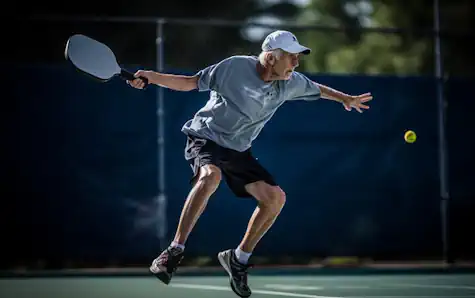
Introduce targets on the court and aim to hit them consistently.
Engage in planned shot types like lobs, dinks, power, etc.
Increase the number of shots you hit during each rally.
Tips for Success
Communicate with your partner through each rally, announcing your shots and calling out the positioning of your opponents.
Stay focused on the drill’s objectives, avoiding the temptation to deviate into unstructured play.
Rotate partners during practice sessions to get accustomed to different playing styles and body movements.
Common Mistakes and Corrections
Failing to maintain the circular formation can lead to a player being out of position and unable to make a clean shot.
As you get tired be careful to make sure you run with large strides when traversing the distance and then return to smaller steps for controlling body placement for each shot.
Allowing lapses in concentration can result in poor shot selection. Stay disciplined and make each shot meaningful.
The Lasting Benefits of “Circle The Wagons”
Regularly incorporating the “Circle The Wagons” drill into your pickleball practice will result in numerous benefits. You’ll notice improved body position, a better athletic stance, a controlled playing tempo, and more effective use of volleys. This, in turn, will lead to a more cohesive and productive partnership with your playing teammates. Your stamina will also increase allowing you to play longer and with more intensity.
Conclusion
Pickleball is more than just a game of hits and misses; it’s a strategic dance that requires finesse, communication, and teamwork. By immersing yourself in drills like “Circle The Wagons,” you’re investing in the very foundations of your play. As with any skill, practice makes perfect – and in the world of pickleball, where precision and agility reign supreme, drills are your stairway to success.
Frequently Asked Questions (FAQs)
What are the “Circle The Wagons” pickleball drills?
The “Circle The Wagons” drill is a dynamic, cardio-intensive drill designed to enhance players’ movement, positioning, and shot accuracy in pickleball. It involves players circling the court while maintaining volley exchanges, essentially running to the opposite side after each shot.
How does the “Circle The Wagons” drill improve my game?
This drill improves your agility, stamina, footwork, and strategy by forcing you to anticipate the ball’s placement, work on shot selection, and maintain a fast pace. It encourages better court coverage and heightens your awareness of positioning and opponent strategy. There is no dominant side or baseline player in this drill.
Can “Circle The Wagons” be practiced solo?
While the drill is primarily designed for many players to simulate game-like conditions, variations can be adapted for solo practice, focusing on footwork, shot accuracy, and stamina.
What are some common mistakes to avoid during the drill?
Common mistakes include failing to maintain the circular pattern, resulting in poor positioning; neglecting the importance of controlled shot selection; and a decrease in concentration leading to less effective plays. A hit mistake will be more obvious during this drill. Correct these by focusing on disciplined running, varied and intentional shots, and continuous communication with your partner.
How often should we incorporate these simple drills into practice?
For optimal results, it’s recommended to incorporate “Circle The Wagons” into your practice sessions at least once a week. This allows you to develop consistency in your footwork and shot execution without overwhelming your practice routine.
